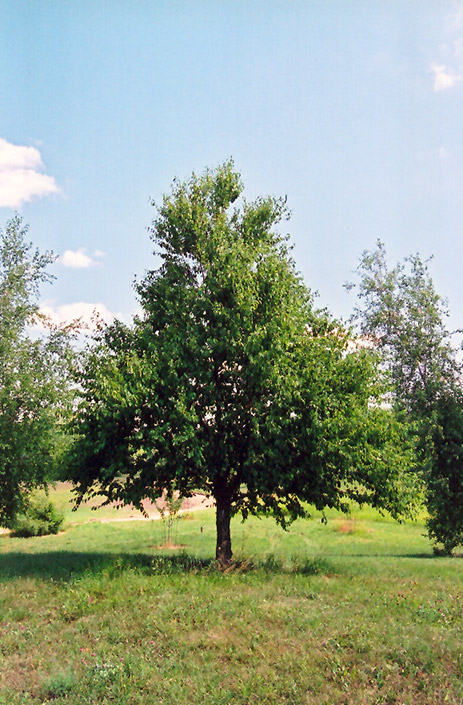* This is a "special order" plant - contact store for details
Height: 50 feet
Spread: 40 feet
Sunlight:
![]()
Hardiness Zone: 3b
Other Names: Cherry Birch, Black Birch
Description:
Although not possessing the white bark of other birches, this is the best birch for golden fall color, also one of the largest; a reliable shade tree with few problems
Ornamental Features
Sweet Birch has dark green deciduous foliage on a tree with a pyramidal habit of growth. The pointy leaves turn an outstanding gold in the fall. The smooth brick red bark adds an interesting dimension to the landscape.
Landscape Attributes
Sweet Birch is a deciduous tree with a distinctive and refined pyramidal form. Its average texture blends into the landscape, but can be balanced by one or two finer or coarser trees or shrubs for an effective composition.
This is a relatively low maintenance tree, and should only be pruned in summer after the leaves have fully developed, as it may 'bleed' sap if pruned in late winter or early spring. Gardeners should be aware of the following characteristic(s) that may warrant special consideration;
- Insects
Sweet Birch is recommended for the following landscape applications;
- Shade
Planting & Growing
Sweet Birch will grow to be about 50 feet tall at maturity, with a spread of 40 feet. It has a high canopy with a typical clearance of 6 feet from the ground, and should not be planted underneath power lines. As it matures, the lower branches of this tree can be strategically removed to create a high enough canopy to support unobstructed human traffic underneath. It grows at a medium rate, and under ideal conditions can be expected to live for 60 years or more.
This tree should only be grown in full sunlight. It prefers to grow in average to moist conditions, and shouldn't be allowed to dry out. It is not particular as to soil type or pH. It is somewhat tolerant of urban pollution. This species is native to parts of North America.
* This is a "special order" plant - contact store for details








